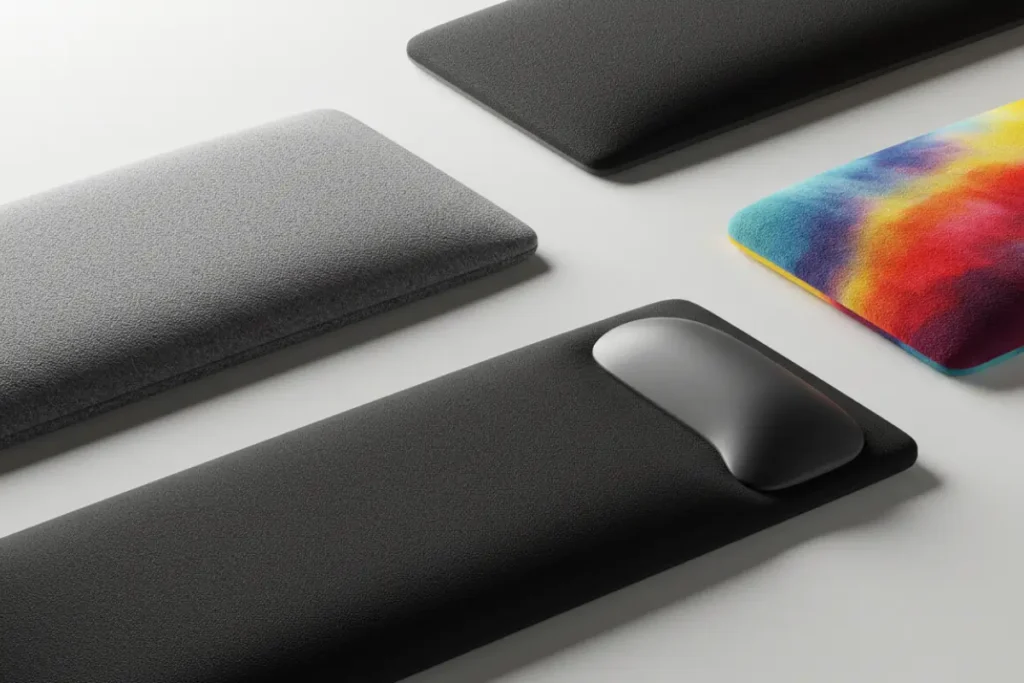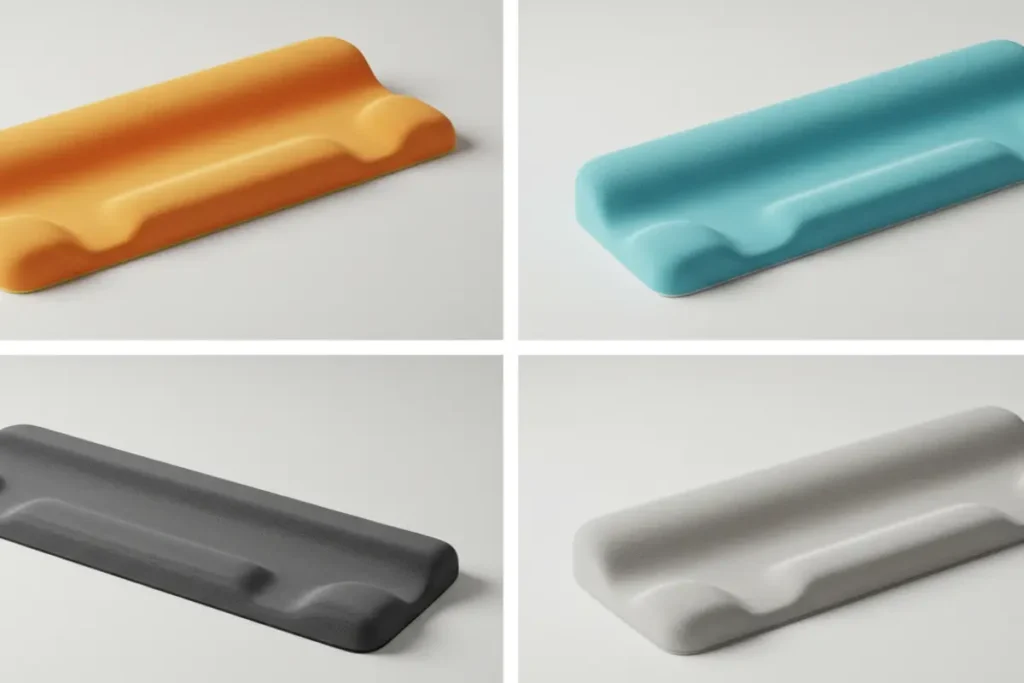Hey there! So, how do you understand the role of wrist rests in your typing setup? If you’ve ever spent hours typing away and felt that nagging discomfort in your wrists, you’re not alone.
And it was with this in mind that I thought about writing an article about it.
As someone who’s obsessed with informatic and spends countless hours typing, I’ve come to appreciate the subtle yet significant impact of wrist rests. Let’s see more about this topic and explore how wrist rests can transform your typing experience.

🖐️ The Importance of Wrist Rests in Typing
When I first started exploring the world of keyboards, I underestimated the value of wrist rests. I thought they were just another accessory. But after integrating them into my setup, the difference was night and day.
Wrist rests serve as a cushion between your wrists and the hard surface of your desk. This simple addition can:
- Reduce strain on your wrists during prolonged typing sessions.
- Promote a neutral wrist position, minimizing the risk of repetitive strain injuries.
- Enhance overall typing comfort, allowing for longer, more productive sessions.
It’s fascinating how such a small accessory can make a significant difference. For knowledge about the benefits of wrist rests, check out this comprehensive guide on Improve Workspace.
🧠 Ergonomics and Wrist Rests: A Perfect Pair
Ergonomics isn’t just a buzzword; it’s a crucial aspect of any workstation setup. Incorporating wrist rests can significantly enhance ergonomic benefits.
Here’s how wrist rests contribute to ergonomics:
- Maintaining Neutral Wrist Alignment: By keeping your wrists in a straight position, wrist rests prevent unnatural bending, reducing the risk of strain.
- Distributing Pressure Evenly: They help distribute pressure across your forearms and wrists, preventing localized discomfort.
- Reducing Muscle Fatigue: With proper support, your muscles don’t have to work as hard to maintain position, leading to less fatigue over time.
For more insights into ergonomic practices, the ErgoPlus article offers valuable information.

🛠️ Types of Wrist Rests: Finding Your Perfect Match
Not all wrist rests are created equal. Depending on your preferences and needs, there’s a variety to choose from:
- Memory Foam: Conforms to your wrist shape, providing personalized support.
- Gel: Offers a cooler touch and maintains its shape over time.
- Wooden: Provides a firm surface and adds a touch of elegance to your setup.
- Silicone: Flexible and easy to clean, ideal for those who prefer a softer feel.
Each material has its pros and cons. For instance, while memory foam offers comfort, it might retain heat. On the other hand, gel wrist rests stay cool but might not provide the same level of softness. For a detailed comparison, LifeWire has an excellent review of various wrist rests.
🧪 Real-Life Experiences: The Impact of Wrist Rests
From my personal experience, integrating a wrist rest into my setup has been a game-changer. I noticed:
- Improved typing speed: With reduced strain, I could type faster without discomfort.
- Enhanced focus: Comfort led to longer, uninterrupted typing sessions.
- Better posture: The wrist rest encouraged me to maintain a more upright posture, reducing back and neck strain.
Others in the keyboard community have echoed similar sentiments. For instance, a fellow enthusiast shared on Improve Workspace how a wrist rest significantly boosted their typing speed and accuracy.
📊 Comparative Table: Wrist Rests at a Glance
| Material | Comfort Level | Cooling Effect | Maintenance | Aesthetic Appeal |
|---|---|---|---|---|
| Memory Foam | High | Moderate | Moderate | Moderate |
| Gel | Moderate | High | Easy | Moderate |
| Wooden | Low | Low | Easy | High |
| Silicone | Moderate | High | Easy | Moderate |

🧩 Integrating Wrist Rests into Your Setup
Adding a wrist rest to your setup is straightforward, but here are some tips to maximize its benefits:
- Positioning: Ensure the wrist rest is aligned with your keyboard, allowing your wrists to rest comfortably without bending.
- Height Matching: The wrist rest should be at the same height as your keyboard to maintain a neutral wrist position.
- Regular Cleaning: Depending on the material, clean your wrist rest regularly to maintain hygiene.
- Trial and Error: Don’t hesitate to try different materials to find what suits you best.
For a step-by-step guide on setting up your workstation ergonomically, Easy Office Life provides comprehensive instructions.
See More
- The Best and Worst Mechanical Switches: A Tier List
- Mechanical Keyboard Brands Ranked from S-Tier to D-Tier
- How to Make Your Keyboard Quieter Without Replacing It
🎯 Conclusion
Incorporating a wrist rest into your typing setup might seem like a minor change, but its impact on comfort and efficiency is profound.
As someone who types for a long time, even for simple activities, I understand the feeling of those who type and end up with hand pain, which is why I think this feature is one of the most underrated, even I have underestimated it.
If you found this article helpful, don’t forget to share it! Also, I’d love to hear about your experiences. What kind of wrist rest do you use? How has it impacted your typing? Drop a comment below!
For more insights into keyboards and typing ergonomics, check out my other articles on Keyboards Technology, like How Ergonomic Keyboards Can Prevent Wrist Pain.


